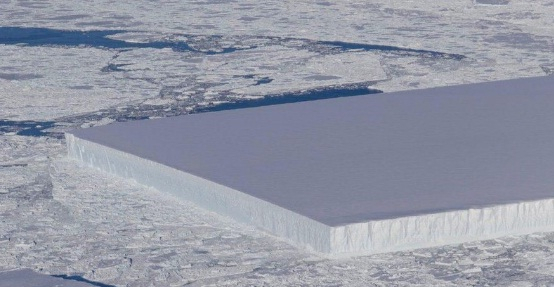
NASA recently shared the image of an ice sheet nearly cut to perfection in Antarctica. The monolithic ice slab was seen floating just off the Larsen C ice shelf and the perfectly cut 90-degree angles seem quite unnatural in the first glance.
The US space agency captured this stunning image as a part of 'Operation Ice Bridge', a mission to study more about the change in the formation of ice sheets in the polar regions over years.
Natural or artificial formation?
As the image of the perfectly cut rectangular ice sheet went viral online, many conspiracy theorists started arguing that this strange structure might have been created intentionally by alleged aliens who visit earth's polar regions. Some of these theorists believe that extraterrestrial beings are secretly living in the polar regions and the government, as well as NASA, are well aware of their existence.
However, experts strongly dismissed the alien angle and made it clear that this iceberg is a completely natural formation. As per experts, people are used to seeing pictures of angular icebergs, with a small tip jutting out of the water. But the rectangular iceberg spotted by NASA is a unique type, known as tabular icebergs.
Tabular icebergs: All you need to know
It should be noted that tabular icebergs have steep, nearly vertical sides and a flat plateau top, and they usually break off of ice shelves. When there are clean calves of the icebergs, the angles in the tabular icebergs will be very close to 90 degrees. However, in the course of time, wind waves and sea spray will fade away the edges of the tabular icebergs.
"Tabular icebergs form, through a process that's a bit like a fingernail growing too long and cracking off at the end. They're often rectangular and geometric as a result. What makes this one a bit unusual is that it looks almost like a square," said Kelly Brunt, an ice scientist with NASA and at the University of Maryland, Live Science reports.








